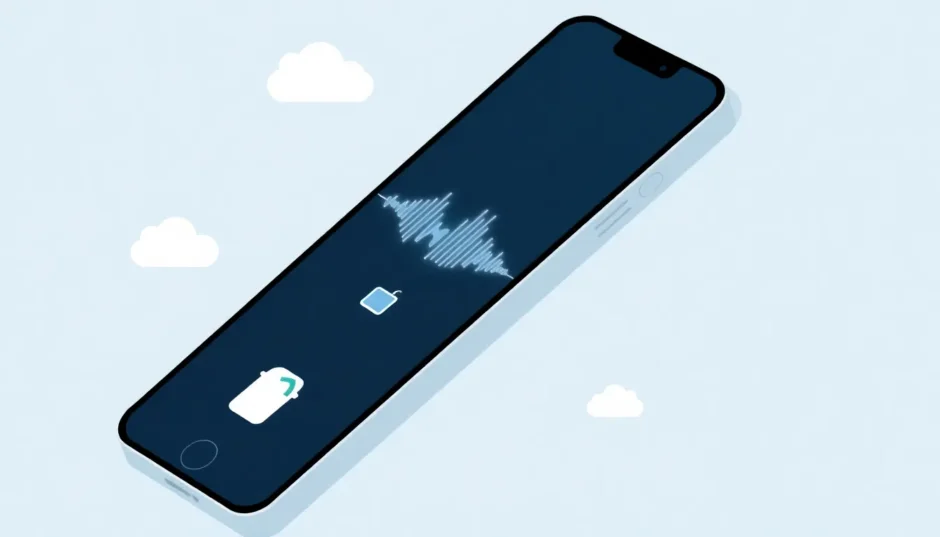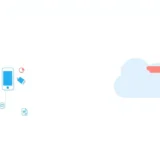Have you ever accidentally deleted an important voice memo from your iPhone? Maybe it was a recording of a business meeting, a lecture, or a special moment with loved ones. That sinking feeling when you realize it’s gone can be overwhelming, especially if you don’t have a backup.
The good news is that there are several ways to get your deleted voice memos back. Whether you’ve just deleted them or it’s been a while, this comprehensive guide will walk you through all your options for voice memo recovery.
Table of Contents
- Understanding How Voice Memo Recovery Works
- Check the Recently Deleted Folder First
- Comprehensive Voice Memo Recovery Solutions
- Professional Voice Memos Recovery with iMyFone D-Back
- Traditional iTunes Backup Restoration
- iCloud Backup Restoration Method
- Additional Voice Memo Recovery Options
- Preventing Future Voice Memo Loss
- Common Questions About Voice Memo Recovery
- Choosing the Right Recovery Method
- Final Thoughts on Voice Memo Recovery
Understanding How Voice Memo Recovery Works
Many people wonder if it’s actually possible to recover deleted voice memos. The answer is a definite yes! Here’s why:
When you delete a voice memo from your iPhone, it doesn’t immediately disappear forever. Instead, the space it occupied is marked as available for new data. The actual recording remains on your device until that space gets overwritten by new files. This means there’s a window of opportunity for voice memo recovery before they’re permanently gone.
This technical process involves the SQLite database system that iOS uses. Your voice memos start as “allocated” data, and when deleted, they become “unallocated” but still physically present on your device. This is the key principle that makes voice memo recovery possible.
However, there’s an important catch: the more you use your iPhone after deleting voice memos, the higher the chance that new data will overwrite the space where your deleted recordings are stored. That’s why it’s crucial to stop using your device as soon as you realize you’ve lost important recordings and begin the recovery process immediately.
Check the Recently Deleted Folder First
Before trying more advanced methods, there’s a simple place to check for your deleted recordings. iPhones have a safety net for voice memos similar to the Photos app – the Recently Deleted folder.
When you delete voice memos, they don’t immediately vanish. Instead, they move to this special folder where they remain for 30 days before being permanently erased. This gives you a full month to recover accidentally deleted recordings.
Here’s how to check the Recently Deleted folder:
Open the Voice Memos app on your iPhone. Look for the “Recently Deleted” folder – it’s usually in the main menu or folder list. Tap on the “Edit” button in the top right corner of the screen. Select the voice memos you want to recover by tapping on them. Finally, tap “Recover” to restore them to their original location.
Remember that this method only works within 30 days of deletion. After that period, your voice memos are automatically removed from this folder, and you’ll need to use other recovery methods.
Comprehensive Voice Memo Recovery Solutions
When the Recently Deleted folder doesn’t have what you’re looking for, or if it’s been more than 30 days, you’ll need to explore other options for how to recover deleted voice memos. The method that works best for you will depend on your specific situation, particularly whether you have backups available.
Here’s a quick comparison of the main recovery approaches:
| Method | Success Rate | Backup Required | Selective Recovery | Data Overwrite Risk |
|---|---|---|---|---|
| Data Recovery Software | High | No | Yes | No |
| iTunes Restore | Medium | Yes | No | Yes |
| iCloud Restore | Medium | Yes | No | Yes |
As you can see, each method has its advantages and limitations. The risk of overwriting current data with iTunes and iCloud restores is particularly important to consider, as you could lose recent photos, messages, or other data that wasn’t included in your backup.
Professional Voice Memos Recovery with iMyFone D-Back
When you need to recover deleted voice memos without a backup, specialized data recovery software offers the most flexible and effective solution. iMyFone D-Back stands out as a comprehensive tool designed specifically for these situations, providing multiple recovery modes to suit different needs.
> iMyFone D-Back.All-in-one Data Recovery Software: You can recover deleted, lost, formatted, or corrupted files from iOS/Android devices and PCs in one tool.1000+ Data Types Recovery: Restore photos, videos, messages, contacts, office documents, emails, audio, etc. without backup.Third-Party App Recovery: Retrieve messages and attachments directly from WhatsApp, LINE, Kik, WeChat, Skype and more.iOS Data Backup: Securely back up various data from your iOS device, reducing the risk of data loss.

Check More Details | Download Now! | Check All Deals
What makes D-Back particularly useful for voice memo recovery is its ability to scan your device directly, finding and restoring deleted recordings even when you don’t have backups. The software works by deeply scanning your iPhone’s storage to locate voice memos that are technically deleted but still physically present on the device.
Recover Directly from Your iPhone
The most straightforward method for voice memos recovery when you don’t have a backup is scanning your device directly with D-Back. This approach has a high success rate, especially if you act quickly before the deleted data gets overwritten.
Here’s how to perform direct voice memo recovery:
Begin by downloading and installing iMyFone D-Back on your computer. Launch the program and select the “Recover from iOS Device” option, then click “Start” to begin the process.
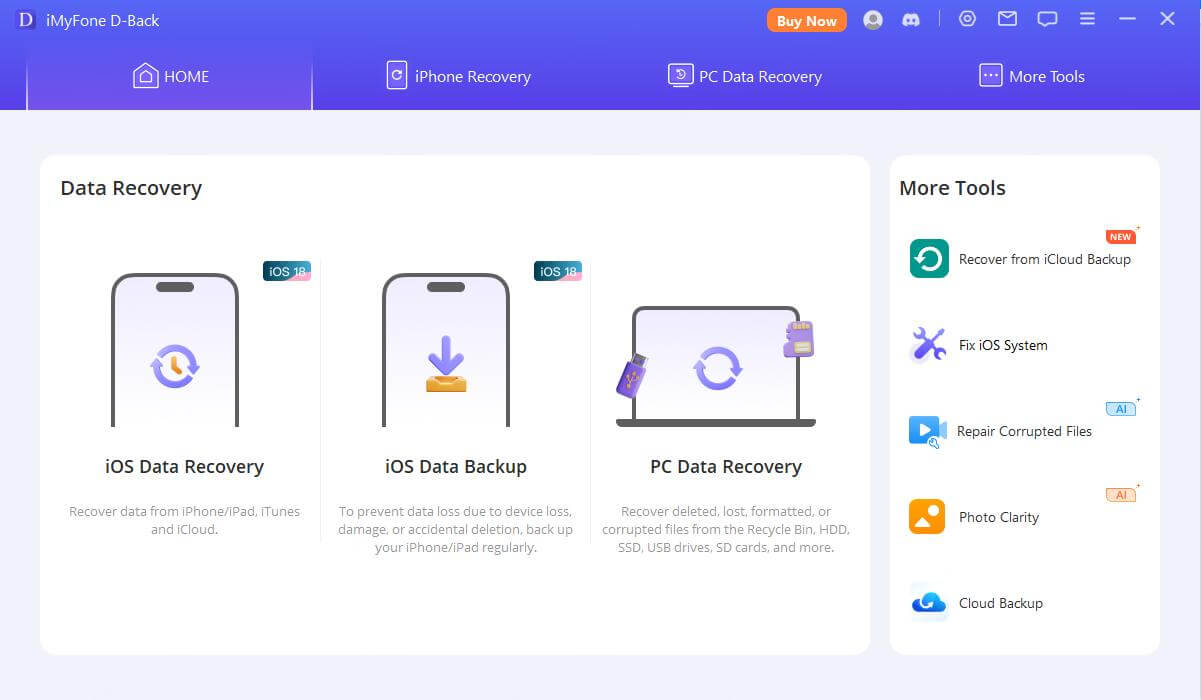
Connect your iPhone to the computer using a USB cable. The software should automatically detect your device. Click “Next” to proceed to the data type selection screen.
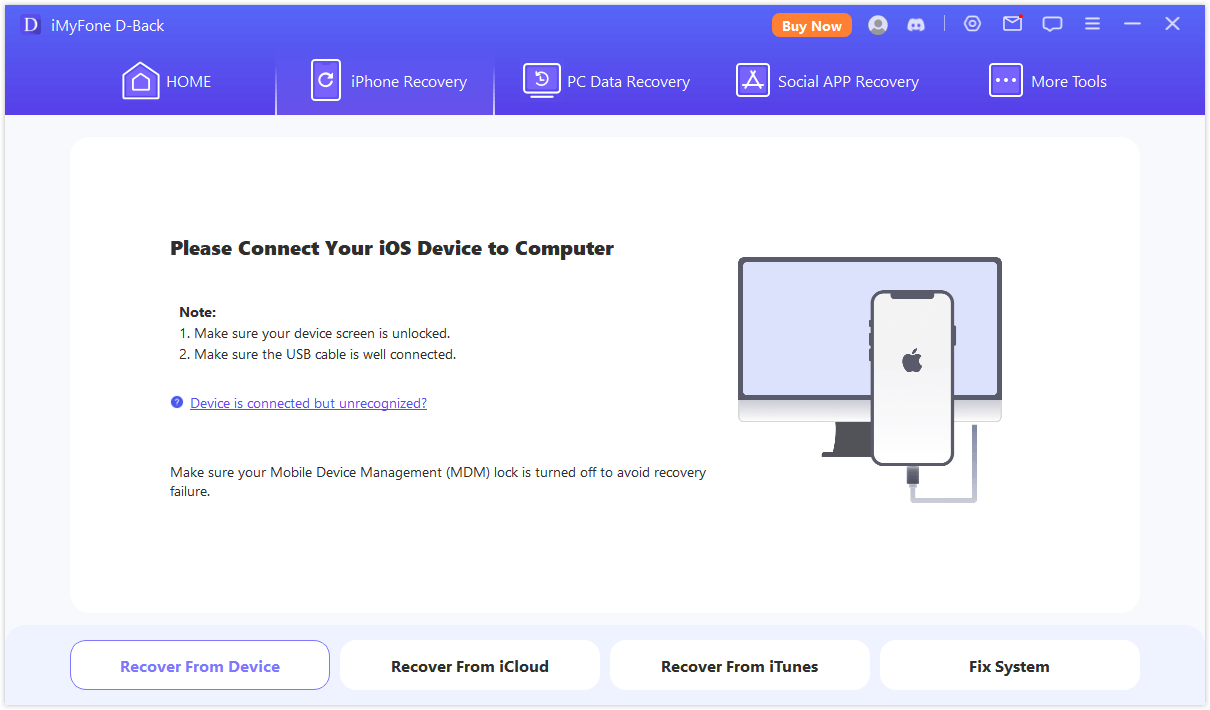
Choose “Voice Memos” as the data type you want to recover. You can select additional file types if needed, but focusing on voice memos will make the scan faster. Click “Scan” to begin analyzing your device for recoverable recordings.
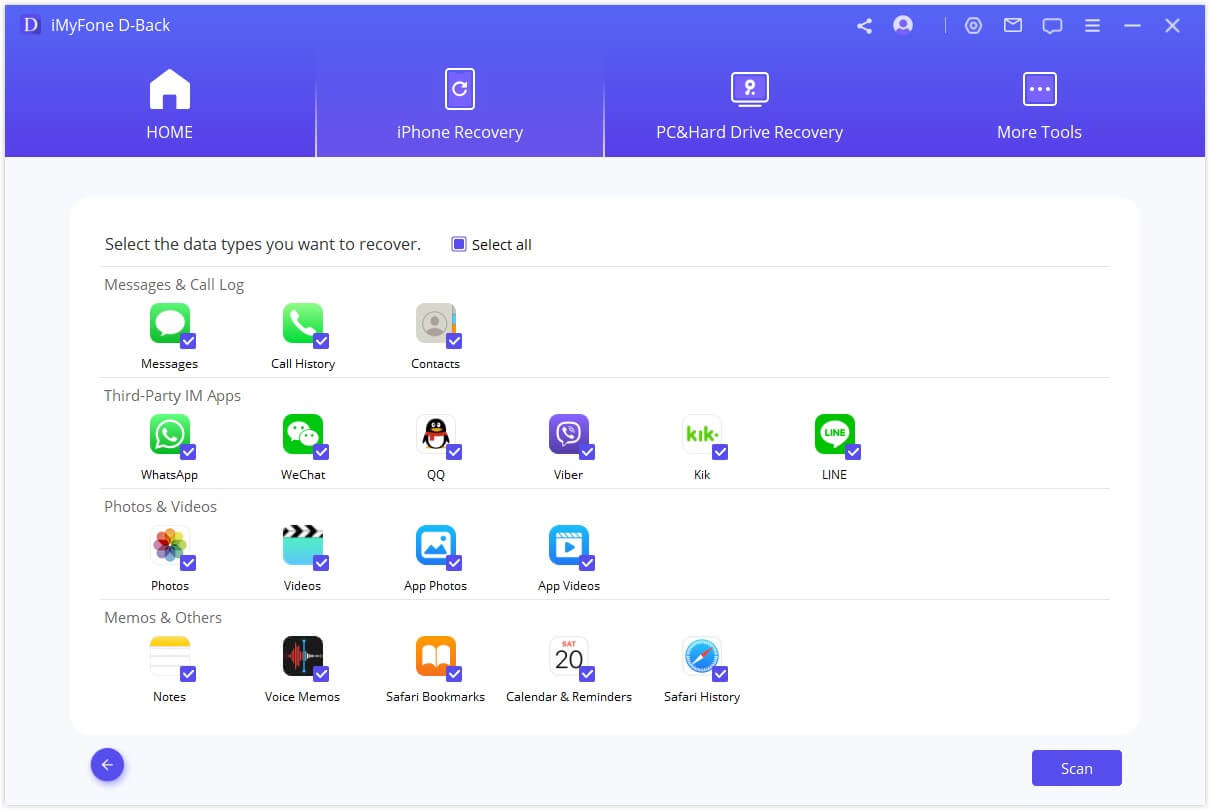
Once the scan completes, you’ll see a list of recoverable voice memos. You can preview them to verify they’re the recordings you need. Select the ones you want to recover and click the “Recover” button to save them to your computer.
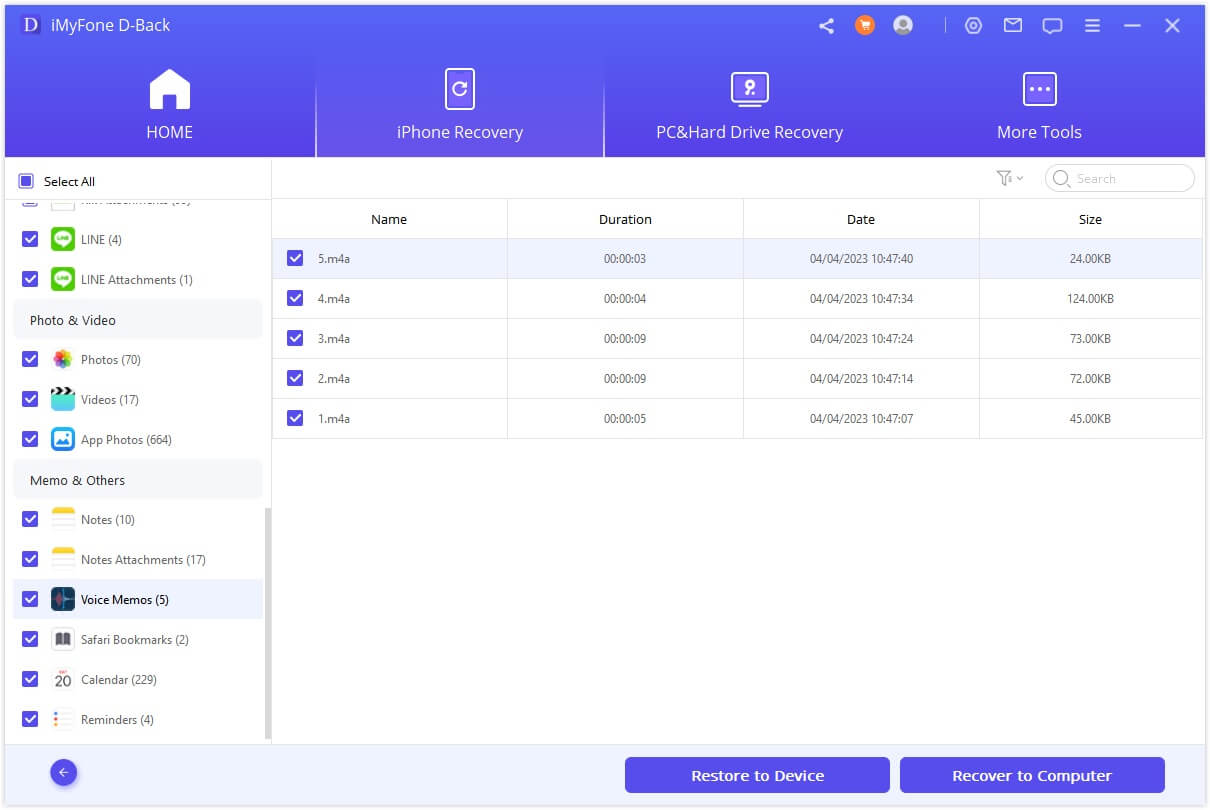
This method of voice memo recovery is particularly valuable because it doesn’t require a backup and doesn’t overwrite any existing data on your device. It’s the ideal solution for situations where you’ve accidentally deleted recordings and don’t have recent backups available.
Selective Recovery from iTunes Backup
If you regularly back up your iPhone to iTunes (or Finder on newer Macs), you have another option for voice memos recovery. iMyFone D-Back can extract specific voice memos from your iTunes backups without having to restore the entire backup to your device.
This selective approach is much more convenient than a full restore because you can choose exactly which recordings to recover, and the process doesn’t affect any data currently on your iPhone.
Here’s how to recover voice memos from an iTunes backup:
Open iMyFone D-Back and select the “Recover from iTunes Backup” mode. Click “Start” to proceed with this recovery method.
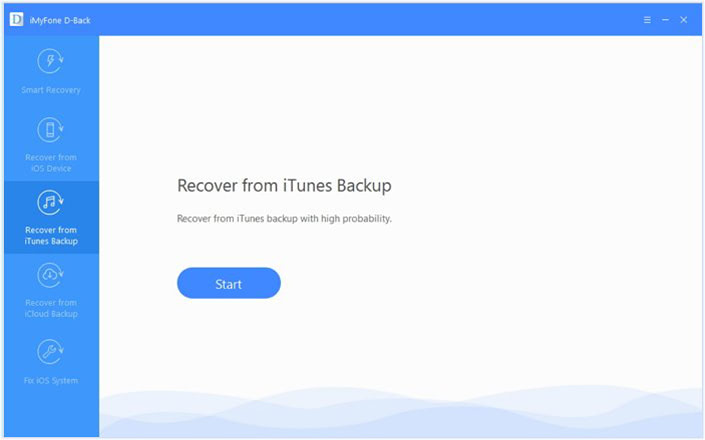
The software will display all iTunes backup files found on your computer. Select the backup that likely contains your deleted voice memos. If you’re not sure which one to choose, look at the backup dates to find the most recent one that would have your missing recordings.
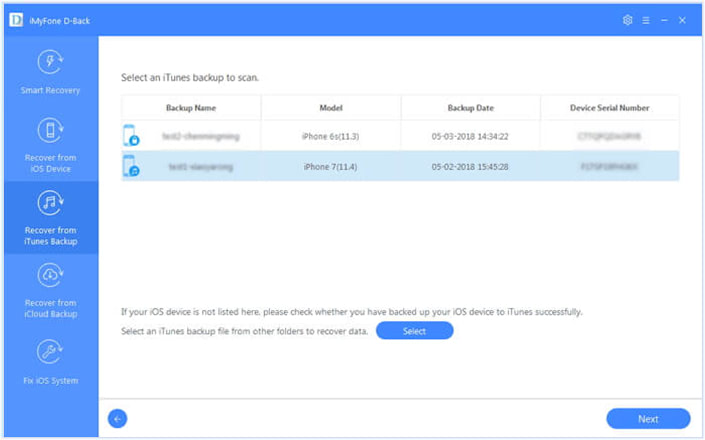
Choose “Voice Memos” as the file type to scan for, then click “Scan” to begin extracting data from the backup. The scanning time will depend on the size of your backup file.
Once the scan is complete, browse through the found voice memos. You can preview them to confirm they’re the ones you need. Select the specific recordings you want to recover and click “Recover” to save them to your computer.
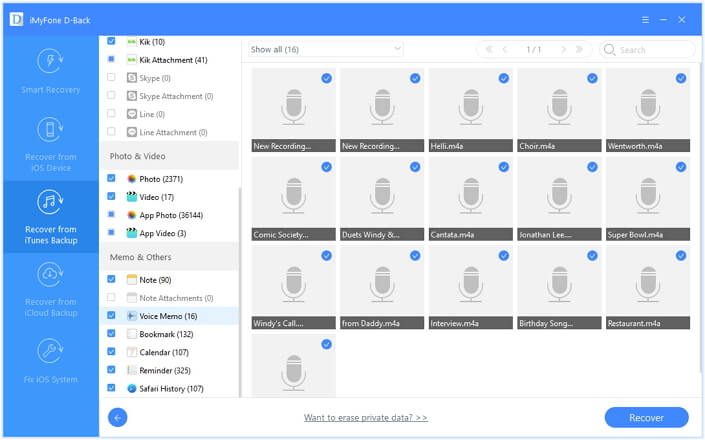
This selective recovery method is perfect when you want to retrieve specific voice memos without affecting your current device data. It’s much more efficient than restoring an entire iTunes backup, which would replace all your current data with older backup data.
Video Tutorial for Voice Memo Recovery
If you’re a visual learner or want to see the recovery process in action before trying it yourself, iMyFone provides a helpful video guide that demonstrates how to recover deleted voice memos using D-Back.
The video walks through the entire process step by step, making it easy to follow along and ensuring you don’t miss any important steps in your recovery attempt.
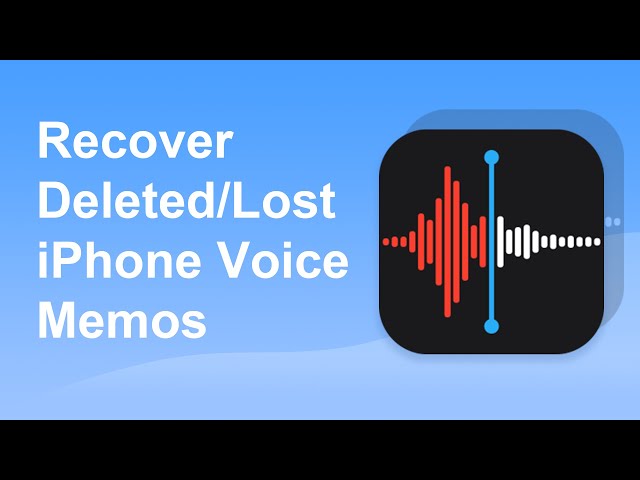
Watching the tutorial can be particularly helpful if you’re new to data recovery software or want to build confidence before attempting to recover your important recordings.
Traditional iTunes Backup Restoration
If you don’t have access to data recovery software, you can use iTunes to restore an entire backup to your iPhone. However, this method comes with significant limitations that are important to understand before proceeding.
A full iTunes restore will replace all current data on your iPhone with the data from the backup. This means any photos, messages, or other content created since the backup was made will be lost. Additionally, you can’t preview what’s in the backup or selectively restore only voice memos.
Here’s how to perform a full restore from an iTunes backup:
Open iTunes on your computer and connect your iPhone using a USB cable. Click on the device icon that appears in iTunes. Navigate to the “Summary” tab in the left sidebar. Under the “Backups” section, click on “Restore Backup.”
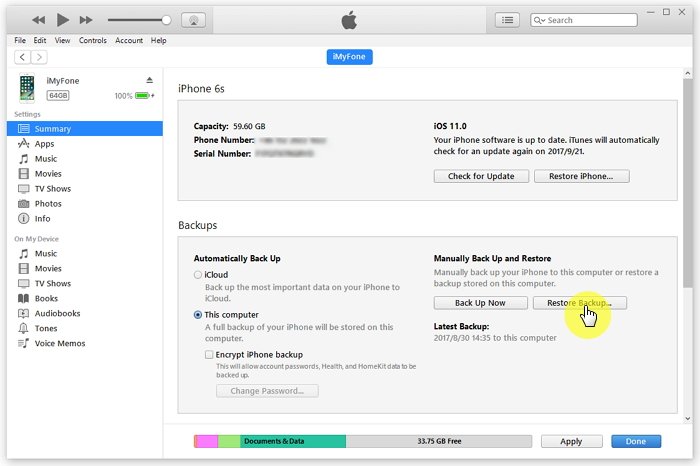
Select the appropriate backup file from the dropdown menu. Choose one that was created before you deleted your voice memos. Click “Restore” and wait for the process to complete. Your iPhone will restart during this process.
This method can be effective if you have a recent backup and don’t mind losing any data created since that backup was made. However, for most people, the selective recovery offered by specialized software is a better option for voice memos recovery.
iCloud Backup Restoration Method
If you use iCloud backups instead of iTunes, you can restore your iPhone from an iCloud backup. Similar to the iTunes method, this approach completely replaces your current device data with the backup contents, so it should be used with caution.
Before beginning an iCloud restore, it’s important to note that this process requires erasing your iPhone first, which means you’ll lose any data created since your last backup. Make sure you have a recent backup if you choose this method for voice memo recovery.
Here’s how to restore from an iCloud backup:
Go to Settings > General > Reset on your iPhone. Tap “Erase All Content and Settings.” You’ll need to enter your passcode and Apple ID password to confirm this action. Your device will restart and begin the erasure process.
After the reset completes, follow the setup steps until you reach the “Apps & Data” screen. Choose “Restore from iCloud Backup.” Sign in to your iCloud account using your Apple ID and password. Select the relevant backup from the list – choose one that was created before you lost your voice memos.
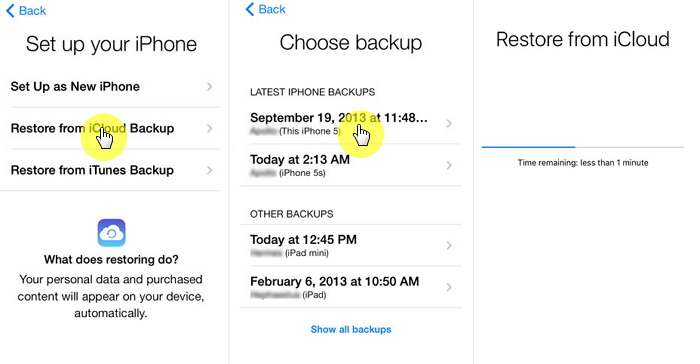
Wait for the restore process to complete. This can take from several minutes to hours depending on your internet speed and the size of the backup. Your iPhone will restart multiple times during this process.
While this method can recover your deleted voice memos if they were included in the backup, the significant downside is losing all recent data. For this reason, many users prefer solutions that allow selective recovery without data loss.
Additional Voice Memo Recovery Options
Beyond the main methods covered above, there are a couple of other approaches you might consider for voice memo recovery depending on your specific situation.
If you’ve specifically saved voice memos to iCloud Drive, you might be able to recover them directly from iCloud.com. This method only works if you manually saved recordings to iCloud Drive, as automatic Voice Memos syncing works differently.
Here’s how to check iCloud Drive for voice recordings:
Open a web browser and go to iCloud.com. Sign in with your Apple ID and password. Click on “iCloud Drive.” Browse through your folders to look for voice recordings. If you find the missing files, you can download them directly to your computer.
This method has limited applicability since most users don’t manually save voice memos to iCloud Drive, but it’s worth checking if you typically use this workflow.
For Mac users wondering how to recover deleted voice memos on their computers, iMyFone offers a Mac version of D-Back with similar functionality for recovering data from Mac systems.
Preventing Future Voice Memo Loss
While knowing how to recover deleted voice memos is valuable, preventing data loss in the first place is even better. Here are some tips to safeguard your important recordings:
Regularly back up your iPhone using either iCloud or iTunes. Consistent backups give you recovery options when accidents happen. Consider using multiple backup methods for added protection. For extremely important recordings, export them to cloud storage services like Dropbox, Google Drive, or iCloud Drive shortly after creating them.
Be extra careful when editing or organizing voice memos. The editing interface can be tricky, and it’s easy to accidentally delete recordings when you meant to trim or rename them. Periodically important voice memos to your computer or other storage locations. Don’t rely solely on your iPhone for preserving critical recordings.
Adjust your Voice Memos settings to extend how long deleted recordings stay in the Recently Deleted folder. By default, they’re kept for 30 days, but you can change this to “Never” automatically clear deleted items, though this will use more storage space on your device.
Common Questions About Voice Memo Recovery
How long do deleted voice memos stay recoverable?
When you first delete voice memos, they move to the Recently Deleted folder where they remain for 30 days. During this time, recovery is simple using the method described earlier. After 30 days, they’re permanently deleted from that folder, but may still be recoverable using data recovery software for some additional time.
The exact window for successful voice memo recovery after permanent deletion depends on how much you use your device. The more photos, videos, apps, and other data you add to your iPhone, the higher the chance that your deleted voice memos will be overwritten and become unrecoverable.
Can I recover voice memos after factory reset?
Yes, it’s possible to recover voice memos after a factory reset if you have a backup from before the reset occurred. Without a backup, recovery becomes much more challenging and would require specialized data recovery software with the ability to scan the device after a reset.
The success of recovery after a factory reset depends on whether the data sectors containing your voice memos have been overwritten by new data. This is why it’s crucial to attempt recovery as soon as possible after data loss.
Why did my Voice Memos app disappear?
If the Voice Memos app icon is missing from your home screen, there are two likely explanations: you may have accidentally deleted the app, or it might be hidden in a folder or on a different screen.
If you deleted the app, you can reinstall it from the App Store. If the App Store shows it as already installed, use the search function to find it, or reset your home screen layout through Settings > General > Reset > Reset Home Screen Layout.
What’s the success rate for voice memo recovery?
The success rate for voice memo recovery varies depending on the method used and how quickly you act after deletion. Data recovery software like iMyFone D-Back typically offers the highest success rates, especially when used soon after deletion.
Recovery from backups has a 100% success rate for data that was actually included in the backup. Direct recovery from the device has variable success depending on how much the device has been used since deletion, with higher success rates when attempted quickly after data loss.
Choosing the Right Recovery Method
When facing voice memo loss, your choice of recovery method should consider several factors: how long ago the deletion occurred, whether you have backups available, how important your current data is, and how comfortable you are with technical processes.
For most users, data recovery software like iMyFone D-Back offers the best balance of success rate, convenience, and data safety. The ability to preview recoverable files and selectively restore only what you need makes it superior to full backup restoration in most scenarios.
If you have a very recent backup and don’t mind losing data created since that backup, the traditional iTunes or iCloud restore methods can work. However, for most real-world situations where users want to recover specific files without affecting their current data, specialized recovery software is the recommended approach.
> iMyFone D-Back.All-in-one Data Recovery Software: You can recover deleted, lost, formatted, or corrupted files from iOS/Android devices and PCs in one tool.1000+ Data Types Recovery: Restore photos, videos, messages, contacts, office documents, emails, audio, etc. without backup.Third-Party App Recovery: Retrieve messages and attachments directly from WhatsApp, LINE, Kik, WeChat, Skype and more.iOS Data Backup: Securely back up various data from your iOS device, reducing the risk of data loss.

Check More Details | Download Now! | Check All Deals
Final Thoughts on Voice Memo Recovery
Losing important voice recordings can be stressful, especially when they contain irreplaceable content like business meetings, lectures, or personal memories. Fortunately, as we’ve seen throughout this guide, there are multiple ways to approach voice
 TOOL HUNTER
TOOL HUNTER